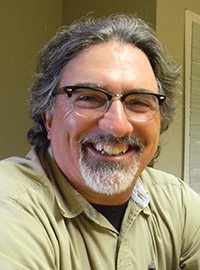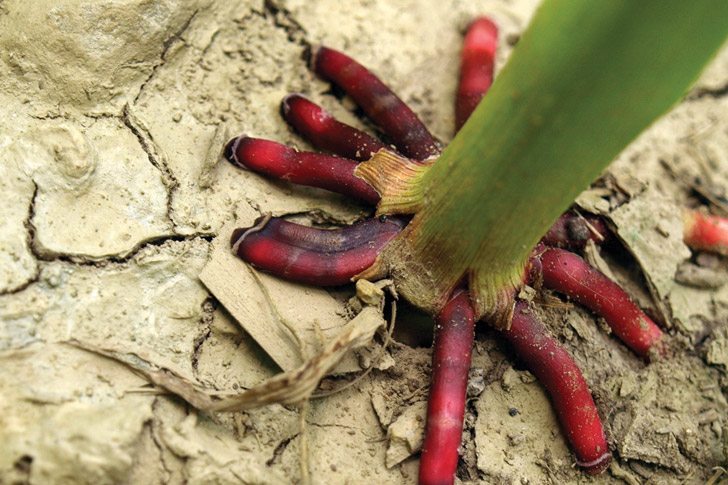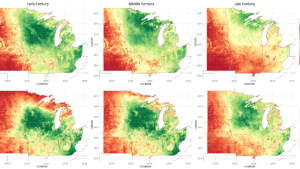One seedsman harnesses the power of Mother Nature in his breeding programs to evaluate hybrids across multiple environments simultaneously.
“Mother Nature doesn’t work in a vacuum.” That comment by Ed Baumgartner, the 56-year old president of 3MG North, the Olivia, Minn., seed research and development firm, sets the stage for the remarkable diversity of this 12-year old company.
“The majors in the seed industry are still focusing on just one trait at a time,” Baumgartner says candidly. “We see it differently. Our research constantly includes multiple environments.
“For example, if we concentrate on drought tolerance, you more than likely will first observe heat stress. That in turn shows us a few things about water efficiency. Then quite rapidly you also see nutrient-use efficiency indicators.”
These multiple “trait expressions” within a single cropping season get multiplied up to three generations within a 365-day period for 3MG. Why and how? Because 3MG conducts this intensive research under the tremendous diversity of Puerto Rico’s weather with its generous heat and abundant sunshine. Plus, seasonal research and yield plots in Olivia and locations in North Dakota and South Dakota help confirm actual Corn Belt yield data.

“We see that when we select for more heat tolerance, we also get better cold tolerance,” notes Baumgartner. “So everything is related. We’re not after just one specific item in our testing programs.
“Yes, we could make faster gains if we concentrated on just one, but Mother Nature throws a different curve ball every year. Our breeding system checks out a variety of environmental challenges each generation.”
He admits it gets more complicated when tracking multiple traits through individual inbred lines. But, Baumgartner adds: “When you let Mother Nature be the judge, so to speak, when you have a new inbred tough enough to handle these various challenges, the rewards are great. We’re seeing much higher yields from our second-generation products under a variety of conditions.”
Testing is indeed intense at 3MG. They operate a 600-acre research farm at Santa Isabel, Puerto Rico, which generates up to three cycles of testing observations each year. Since their start in 2004, that puts them at 32 crop cycles and well into their third generation of breeding work on selected material.
“Over the years, we have developed a proprietary breeding methodology in corn that uses the fast environment of Puerto Rico and harnesses all of its various growing season challenges to develop very tough products,” explains Baumgartner. “The products from this methodology we label as Durayield, our trademark for products with high levels of biotic and abiotic stress tolerance.
‘”Durayield uses many genes that already exist in corn. The good Lord has provided everything we need in our crops to be successful. We see no need to insert something extra from another species. Durayield genes have been selected to express themselves when challenged by the environment in which they are grown. This means they turn on when needed and off when not needed, keeping as much energy as possible focused on grain production.”
Baumgartner challenges current thinking. He says many in agriculture believe we will not be able to keep up with world climate change and the predicted disasters it will contain.
“To the contrary, it is our belief we can actually head off these disasters by the extreme stress-breeding segment of our proprietary breeding methodology,” he shares. “We need to be breeding new seed products today to accommodate all the stresses of the future. We ensure adaptability by properly testing new products where they are to be grown. We also believe our proprietary breeding methodology is transferable to other crops.”
Yes, Baumgartner envisions a new future for seed production to meet the needs of a growing world population and a changing world climate. “And if we selectively breed the right kind of toughness into this seed it will also dramatically reduce pesticide and other chemical inputs,” he says. “A total seed that is ‘farmer friendly’ is my ambition.”
Baumgartner questions if transgenic hybrids have soon run their course. 3MG has done lots of contract research work on GMO crops. But he wonders if the industry has plateaued.
“Today, many seedsmen and farmers are seeing real value is back in the genetics,” he says. “That has been our focus since Day 1. Transgenic traits of today are more like accessories…. they protect but they do not enhance. Instead, we’re incorporating these tropical genes expressing toughness to differing environmental challenges into our 100-day and earlier inbreds. It’s a slow, tedious process but developing new seeds that can produce food in a variety of different environments around the world is exciting.”
“The reality today is that corn breeding is becoming consumer driven. If a farmer growing and feeding non-GMO corn to his livestock better connects with the consumer on both value and taste than it’s a win-win situation for growers and consumers. This farm to fork movement is very real out there.
“As we get deeper into working with the genetic toughness of selected inbred lines to the extreme variations of Mother Nature, we think hybrids of the future will be more able to withstand challenges of pests, insects, weather stresses, even variations in the soils of a given production area.”












